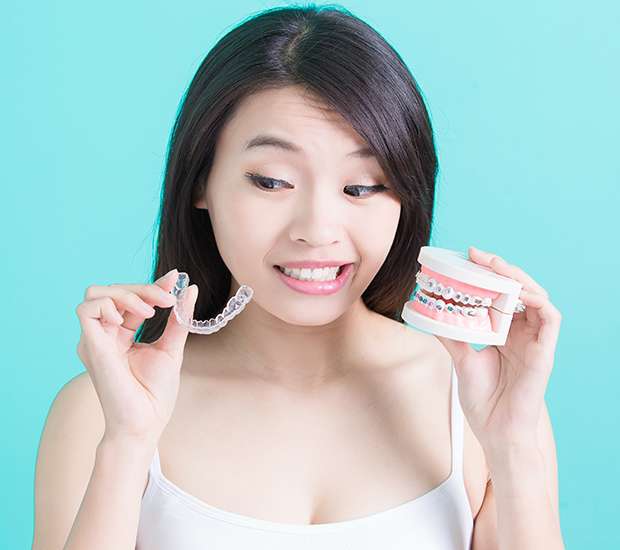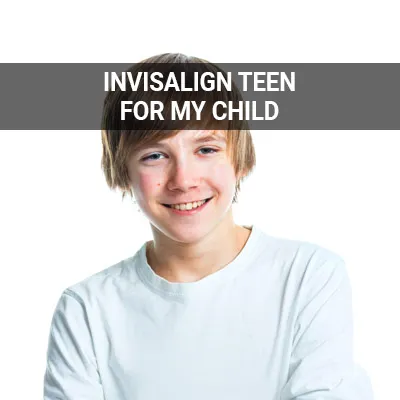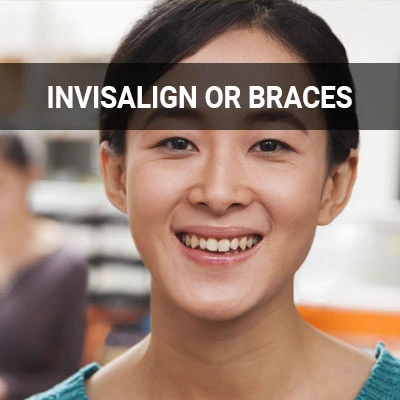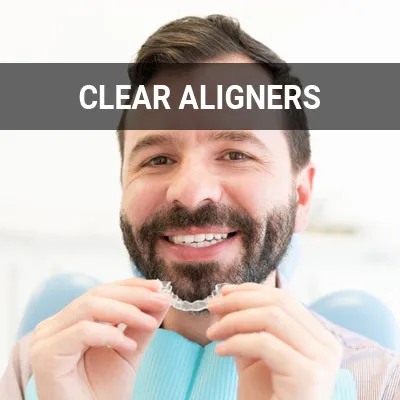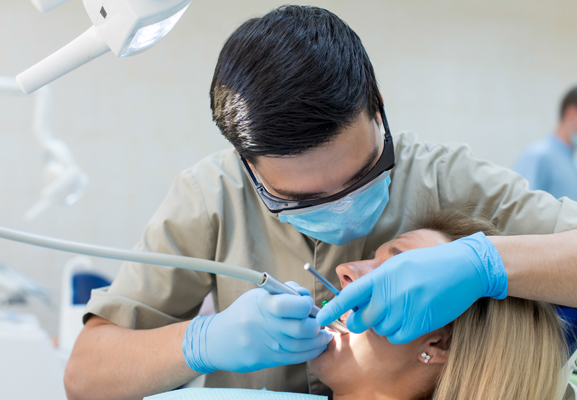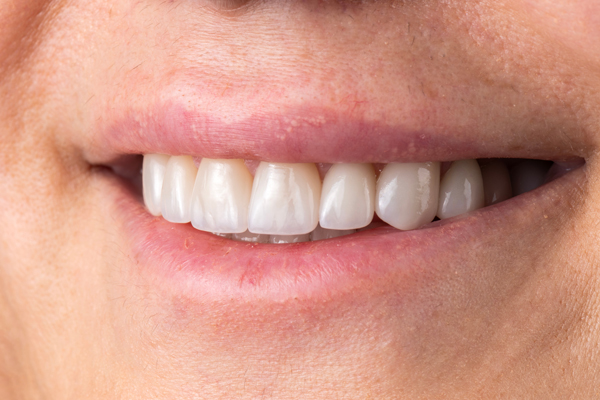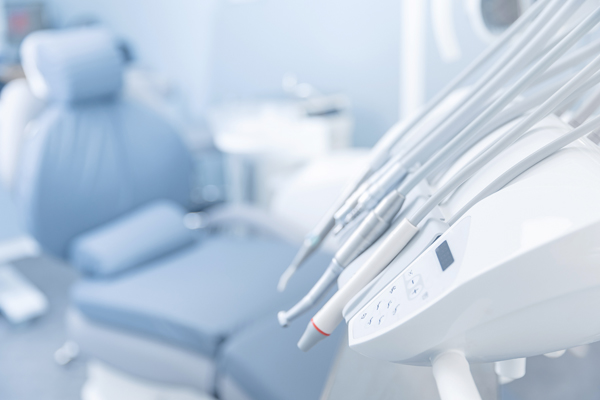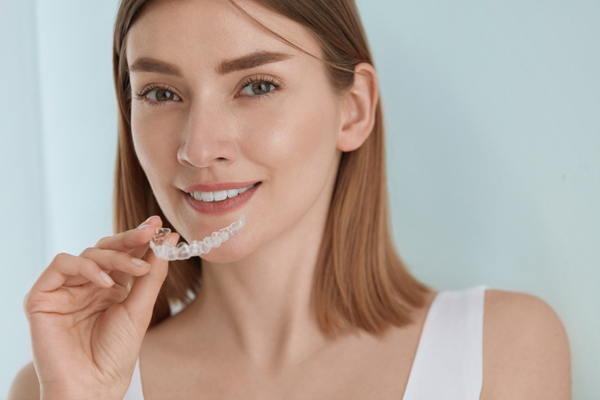Invisalign vs Traditional Braces Charlotte, NC
When it comes to straightening your teeth, there are more options on the market now than ever. Two of the most popular options are Invisalign® and traditional braces. While neither is definitively better than the other, both have their own set of pros and cons.
Invisalign and traditional braces are available at Randolph Dental Care in Charlotte and the surrounding area. We can help provide you with the best treatment for your unique case. Call us today at (704) 366-3622 to schedule an appointment or learn more about our services.
Differences Between Braces and Invisalign
Traditional Braces
While they both achieve the same result, braces and Invisalign have differences in their course of treatment. Braces have been the traditional form of treatment for decades. Today's braces come in a variety of types, from tooth-colored ceramic, stainless steel, and even gold-colored.
Many people who wear braces can choose colors to personalize their braces. Oral hygiene remains particularly important when wearing braces. Patients must practice good dental hygiene with frequent brushing and flossing to remove food debris so that bacteria does not cause inflamed, painful gums or damage tooth enamel.
Invisalign
Developed in 2009, Invisalign has grown in popularity as an option for individuals who wish to correct dental issues such as gaps between teeth, crowded or crooked teeth, and an overbite or underbite. Invisalign Teen offers a nearly invisible way for teens to straighten their teeth without braces. Invisalign offers a series of clear, completely custom-made plastic aligners — called "trays" — that require no brackets or metal wires.
Patients receive a series of plastic trays throughout treatment that gradually shifts the teeth in the mouth to help them get the smile they desire. Oral hygiene is also important when wearing aligners. People must brush and floss before placing the aligners in their mouth and wash their aligners daily.
“While they both achieve the same result, they differ in their course of treatment.”
Length of Time
Though the result of braces and Invisalign remains the same, the time it takes for each treatment differs. Traditional braces require approximately 18-24 months of treatment. The average treatment time for Invisalign patients stays between 12-18 months, depending on the issues that need correcting.
For patients with minor misalignment, their Invisalign treatment may be finished as quickly as six months. Invisalign Teen must be worn between 20-22 hours a day, every day, throughout treatment. With both braces and Invisalign, the total treatment time varies.
“Though the result of braces and Invisalign remains the same, the time it takes for each treatment differs.”
Efficacy
According to at least one meta-analysis, patients prefer clear aligners like Invisalign over metal braces for their discreet nature, comfort, and ease of maintaining oral hygiene. Multiple studies in the meta-analysis also found that patients tended to have a shorter treatment time with Invisalign than with traditional braces.
However, it is crucial to note that Invisalign lacks the precision of traditional braces, making them better suited for patients with less severe orthodontic issues. While clear aligners are an overall effective means of addressing malocclusion, traditional braces can more significantly shift the teeth and jaw. At Randolph Dental Care, we take all the necessary steps to provide our patients with the most effective, personalized treatment possible.
“How effective are Invisalign and traditional braces?”
Check out what others are saying about our dental services on Yelp: Invisalign vs Traditional Braces in Charlotte, NC
Eating
As stated by Healthline, patients should keep their Invisalign trays in their mouth for 20 to 22 hours per day. These trays should only be removed for eating, drinking anything that is not clear water, or performing their oral hygiene routines. Since Invisalign trays do not involve any wires or brackets, the treatment itself does not necessitate any dietary changes. However, patients should still brush their teeth before putting their aligners back on to prevent staining.
On the other hand, patients will need to adjust their diets while wearing braces. This is because the brackets are sensitive to damage, and patients must take care not to cause them to separate from the tooth. Thus, it is necessary to avoid any foods that are too hard, sticky, or chewy, such as popcorn, chewing gum, hard crackers, and more. It is also essential to limit sugary foods and drinks, as the combination of sugar and saliva may lead to an excess of plaque that is hard to remove.
“What can I eat when I have braces?”
Questions Answered on This Page
Q. How effective are Invisalign and traditional braces?
Q. What can I eat when I have braces?
Q. What are the aesthetic differences between Invisalign and traditional braces?
Q. What are the differences between braces and Invisalign?
Q. How long do braces and Invisalign treatments last?
People Also Ask
Q. What are the pros and cons of Invisalign?
Q. What are some examples of purely cosmetic procedures?
Q. What are the differences between braces and Invisalign?
Q. How can someone find the right Invisalign Dentist?
Q. Are clear aligners a time-saving treatment?
Q. When are braces more effective than Invisalign?
Q. What should people consider before seeking cosmetic dental care?
Aesthetics
For many patients, one of the major selling points of Invisalign is its virtually invisible nature. Unlike traditional braces, they do not draw any attention to the teeth — making them appealing to teens, especially for senior pictures. Invisalign trays are also removable, which can come in handy for contact sports.
While Invisalign is a more discreet option to traditional braces, traditional braces can shift the teeth and jaw more precisely. On the other hand, Invisalign allows for less demineralization and root resorption than traditional braces — making patients less prone to discoloring or tooth shortening. In any case, all orthodontic devices have the potential to close any wide gaps between the teeth, straighten crooked teeth, and align the teeth tips.
“…all orthodontic devices have the potential to close any wide gaps between the teeth, straighten crooked teeth, and align the teeth tips.”
Frequently Asked Questions
Q. Which is more comfortable: braces or Invisalign?
A. Initial discomfort comes when placing and adjusting braces. The brackets and wires can also irritate sensitive mouth tissues and may cause the occasional mouth sore. The good news is, this is temporary. Once patients become accustomed to their braces and adjustments, the pain goes away. For the most part, Invisalign trays remain comfortable and custom-made to fit each individual's mouth. Some patients may experience initial discomfort when switching to a new set of aligners as the teeth shift into new positions.
Q. Which takes longer: braces or Invisalign?
A. The treatment time varies for each individual, depending on the issues that need to be corrected. For most patients, braces must be worn for 18-24 months. Invisalign treatment remains typically shorter, and many patients can achieve their desired results within 6-18 months, depending on each patient and the issues that need to be addressed.
Q. Are there dietary restrictions with braces and Invisalign?
A. When wearing braces, patients will need to refrain from eating certain foods and snacks, such as nuts, sticky foods, and gum. With Invisalign, no dietary restrictions apply. With trays removed when eating and drinking, no worries remain regarding damaging them with hard or sticky foods. Whether you opt for braces or Invisalign, you must brush your teeth at least twice daily and avoid food and drink high in sugars.
Q. Which is more expensive: Invisalign or braces?
A. The cost of braces and Invisalign treatment varies, depending on the issue that needs correcting and the length of treatment time. Every insurance plan is different. Check with your insurance provider for coverage information before seeking treatment.
Q. How often will I have to see my Invisalign or braces provider?
A. Patients with traditional braces usually see their braces provider about every four weeks for adjustment appointments. Invisalign wearers typically visit their Invisalign provider about every four to six weeks to ensure their treatment is progressing as planned. Invisalign appointments are quicker traditional braces since there is no need for adjustment.
Invisalign® Terminology
Call Us Today
A beautiful smile is not just a matter of aesthetics — it can also greatly impact your oral health. Whether you need Invisalign or traditional braces, Randolph Dental Care can help. Call us today at 704-366-3622 to schedule an appointment or learn more about our services.
Helpful Related Links
- American Dental Association (ADA). Glossary of Dental Clinical Terms. 2024
- American Academy of Cosmetic Dentistry® (AACD). Home Page. 2024
- Invisalign®. How Invisalign Works. 2024
- Invisalign®. Take the Smile Assessment. 2024
- WebMD. WebMD’s Oral Care Guide. 2024
About our business and website security
- Randolph Dental Care was established in 2016.
- We accept the following payment methods: American Express, Cash, Check, Discover, MasterCard, and Visa
- We serve patients from the following counties: Mecklenburg County
- We serve patients from the following cities: Charlotte, Matthews, Huntersville, Fort Mill, and Pineville Mint Hill
- Norton Safe Web. View Details
- Trend Micro Site Safety Center. View Details
Back to top of Invisalign vs Traditional Braces
